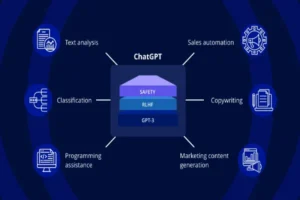6 Cost Reduction Strategies That Still Hit Sales Targets

Reducing business expenses while sustaining a strong sales performance requires a careful and structured approach. Many organizations seek cost-saving measures, but risk affecting customer experience or revenue when actions are not properly evaluated. It is essential to identify which activities can be scaled back without reducing value for clients or disrupting sales operations. With thoughtful planning, businesses can become more efficient while keeping their targets in sight.
1. Reduce Service Costs With AI-Powered Agent Builders
Digital tools that automate support and sales tasks can help reduce costs while maintaining service quality. An AI agent builder can assist in managing routine inquiries, guiding users through common questions without human involvement. These systems operate continuously, reducing the need for extensive support teams and lowering operational expenses. By automating repetitive interactions, businesses can focus staff resources on complex issues and high-value sales opportunities. This improves efficiency while keeping customer service standards consistent.
2. Identify Core Business Areas To Cut Non-Essential Costs
Cost reviews should begin by examining where financial resources are currently being directed. Some departments or systems may receive funding that exceeds their value to the organization. Identifying low-impact expenses, such as underused software licenses or duplicated tools, allows businesses to adjust budgets without affecting service quality. Removing non-essential costs frees up resources for core functions that influence revenue. A data-driven review process ensures spending aligns with actual business needs.
3. Balance Budget Cuts With Customer Retention Goals
Customer retention plays a critical role in long-term revenue stability. When reducing costs, companies must maintain service levels that keep customers satisfied. Instead of limiting support or cutting communication channels, organizations can train teams to resolve issues more efficiently or adopt structured response protocols. Enhancing internal skills can improve service while reducing reliance on external vendors or added staff. Focusing on client satisfaction supports loyalty and reduces the costs associated with customer churn.
4. Simplify Internal Processes To Drive Efficiency
Streamlined operations lead to faster execution and lower overhead. Many business processes contain redundant steps that slow progress and require unnecessary labor. Standardizing tasks, removing approval delays, and integrating systems can improve productivity. Workflow simplification also reduces errors and lowers the cost of correction. Clearer internal procedures create more time for sales teams to concentrate on customer engagement and follow-ups.
5. Rethink Resource Allocation For Better Sales Outcomes
Allocating resources according to performance outcomes supports effective budgeting. Investments should be directed to the areas that generate measurable returns. Marketing campaigns, for instance, may need refinement if current channels show weak engagement or low conversion rates. Redirecting efforts toward high-performing segments or regions can maximize impact. Sales teams benefit when budgets are connected to results, ensuring efforts are rewarded and duplication is avoided.
6. Encourage Cross-Functional Collaboration
Departments working together can achieve cost savings through shared knowledge and aligned goals. Collaboration between sales, marketing, and support teams reduces waste and improves consistency. Joint planning prevents repeated efforts and ensures that campaigns or outreach initiatives align with shared objectives. Coordinated actions reduce miscommunication, leading to smoother customer interactions. When departments operate with a common understanding of goals, operational costs decline while customer value increases.
Reducing costs while maintaining strong sales outcomes requires strategic planning and disciplined execution.By identifying non-essential spending, simplifying internal procedures, and applying resources more effectively, organizations can improve operational efficiency. Tools such as an AI agent builder can further support these goals by lowering labor costs and maintaining consistent service quality. When implemented with clarity and structure, cost-saving strategies can lead to stronger and more sustainable sales performance.




